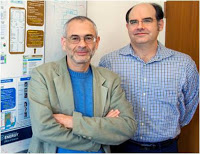Deepwater Horizon oil spill cleanup microbes project in Examiner.com
The first research effort reported in an article published online June 21, 2012, in the ISME Journal involved samples taken immediately after the Deepwater Horizon spill began and during the ensuing clean up efforts.The researchers found that a variety of microbes consumed parts of the oil spill selectively. Each group of microbes specifically targeted one group of… [Read More]
